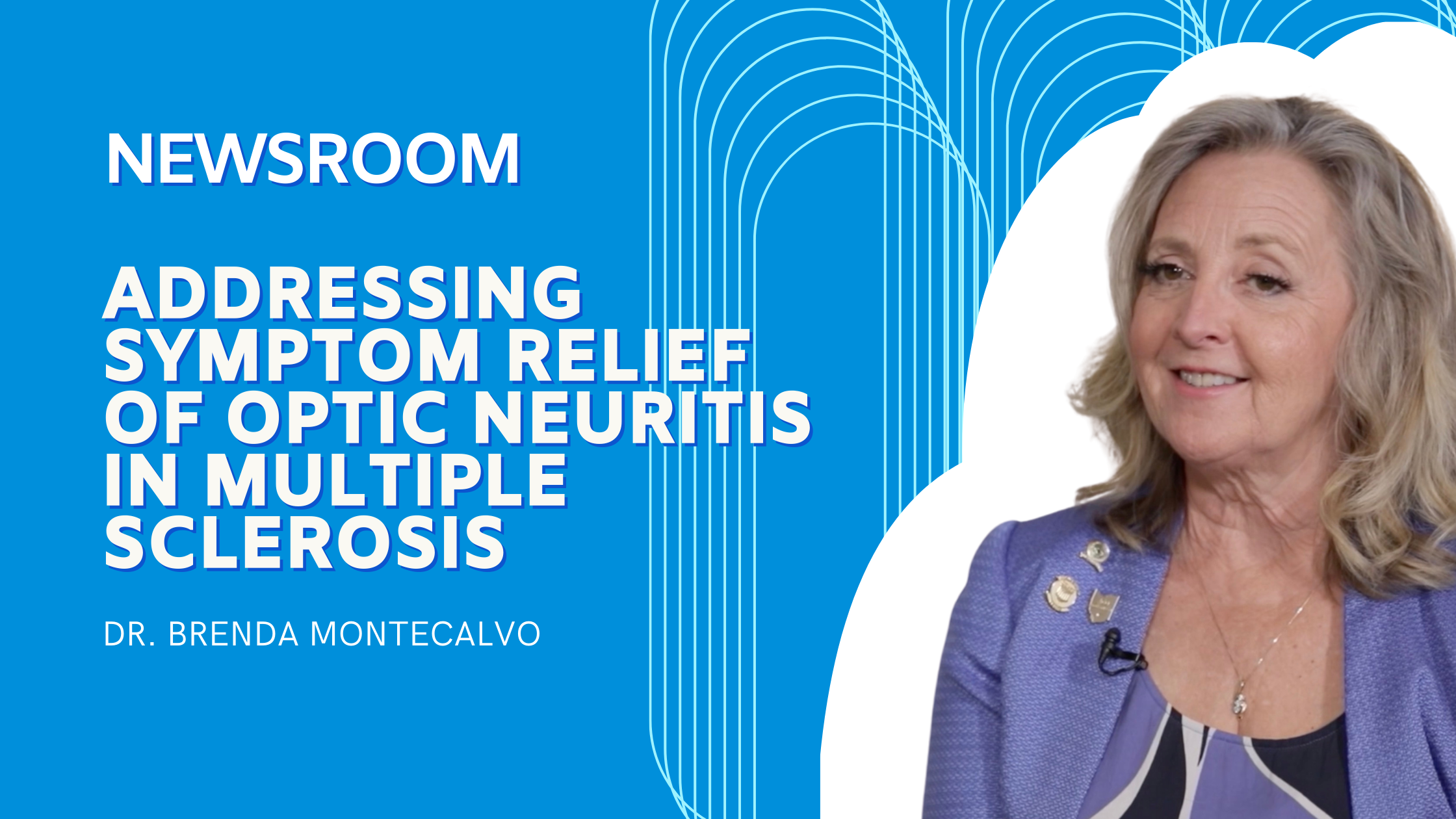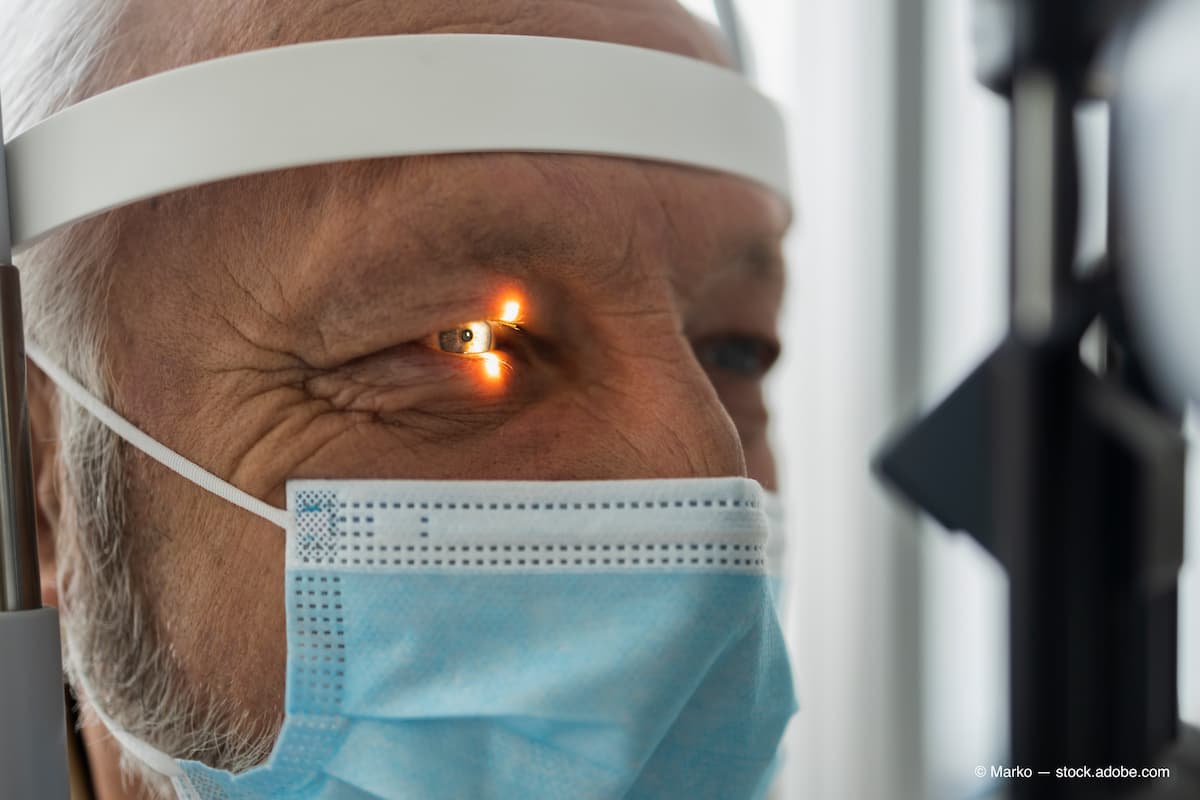
Addressing symptom relief of optic neuritis in multiple sclerosis
Contoured prism lenses may resolve symptoms such as neck, shoulder, and head pain.

Multiple sclerosis (MS) can be a demanding and disabling condition in which the body’s immune system attacks nerves in the brain and spinal cord. Symptoms can be highly patient specific, but visual problems are often 1 of the first conditions of MS to be seen clinically.1 Unfortunately, many patients may suffer from relapsing-remitting MS, demonstrated alternating periods of symptoms and recovery.1
Optic neuritis can be an early warning sign of MS, which may not impact life span so much as a patient’s quality of life.2,3 While eye care professionals (ECPs) are aware of optic neuritis, there can be some clinical challenges to consistently provide optimal eyesight to patients with MS who suffer from flare-ups.
Vision-related effects of MS
While the symptoms of optic neuritis in a patient with MS may typically be identified by a neurologist, as ECPs we should be aware of the specific vision-related effects. Signs may include fluctuations in the inflammation of the optic nerve and altered binocular vision.2 Lens prescriptions for patients with MS may consistently fluctuate based on flare-ups. Patients with MS and optic neuritis are more likely to have binocular vision deficits such as esophoria posture with reduced stereopsis.2 As a result, it can be challenging to give patients with MS the optimal eyesight they may expect.
How we manage and navigate oculomotor symptoms in patients with MS can also be challenging. The exertion of extraocular muscles in the normal population is a part of vision therapy exercise. In patients with MS, vision therapy should be approached cautiously and conservatively to avoid causing additional problems. Testing may require short bursts of intervention activities without causing overstress and exhaustion. The goal is to keep the visual system as comfortable as possible while still addressing oculomotor disorders.
Neurolens for MS
When treating patients with MS, ECPs can serve as part of a team of providers in patient-centered care. At our practice, all patients are given a questionnaire to assess symptoms such as neck pain, shoulder pain, dry eye, and comfort when reading or using digital devices. I ask our patients to rank their symptoms using a scale of 0 to 5. A score of 2 or above is an indication that we may need to use contoured prism lenses to address even a slight exophoria.
The next step is to determine their refractive condition through testing and run the Neurolens Measurement Device, Gen 2 for 2 minutes to determine to a tenth of a degree which level of prism will be appropriate for that patient. Anyone who measures with a convergence excess or convergence insufficiency on the device can benefit from Neurolenses. In our clinical experience, we have witnessed approximately a 95% success rate for relief of headaches, neck, shoulder pain, and migraines. Having prescribed prisms for 35 years, I have witnessed greater pain relief with contoured prism lenses.
After prescribing the lens, we ask the patient to return to clinic to determine the extent of their symptom relief. Chairside, I will explain how alignment errors in the patient’s eyes can overstimulate the fifth cranial nerve, the trigeminal nerve, which can cause pain in MS.
Most patients attribute their pain to eyesight and think that, by changing their glasses, the condition will resolve, which is not true. I demonstrate this to my patients without their prescription in place. When a prism is applied without the prescription in place, and there is substantial relief of neck or shoulder pain, they can see that it’s not eyesight based. The cause is more the overaction of the trigeminal nerve.
Symptom relief
Contoured prism lenses can provide patients with MS at least some compensatory relief. They can reduce the stress on the eye muscle systems so there can be fewer symptoms and discomfort while still using their visual systems for daily living, such as while viewing digital devices.
For instance, if a patient with MS is given a prism for near and they looked at distance, they may be stressed because of an unnatural amount of fusion or binocular cooperation they need for that distance. Since the contoured prism has a different amount of prism at distance vs near, the clinical application and value to patients with MS can present as better teaming, less double vision, and, ultimately, more pain relief.
Both binocularity and optic neuritis must be considered because if a patient with MS suffers a flare-up of optic neuritis, it may not be easily resolved with that prism. However, it is beneficial to know that we are still addressing other components that cause problems. Patients with MS should be coached ahead of time that contoured prism lenses won’t necessarily address anatomical issues, as pharmacotherapy perhaps could. But, based on eye teaming, contoured prism lenses can help resolve important daily symptoms, such as neck, shoulder, and headache pain.
Understanding the adjustments
Patients may be acclimated to wearing 1 pair of eyesight glasses and keeping the same glasses for 2 years. A little bit of education must take place to help patients with MS, in particular, because of the fluctuating inflammation that can cause eyesight changes in relapsing-remitting MS. The hope is that prescription changes do not happen very often, but the challenge is that they can be common. Contoured prism lenses can help reduce the strain and antagonism on the visual system, and hopefully, prevent or prolong the return of some inflammatory situations because of relief of extraocular muscle conditions.
The use of digital devices has increased astronomically. Anyone, even in a normal population, who must focus on a digital device for any length of time may be prone to some sort of ocular symptoms. For patients with MS who experience headache and eyestrain, who also cannot move or move with ease, if on top of all this they also cannot use their digital devices, this can be very frustrating. With their symptoms relieved, these patients can have a better quality of life and be able to do activities they otherwise couldn’t.
Though experts have not pinpointed the exact causes of MS, they have highlighted a few trends that include rising worldwide prevalence and increased pediatric-onset MS.4 Our practice may not see a high percentage of patients with MS compared with other regions. However, this demographic is a huge concern because of the potential progression of many physical lifelong challenges. Reduction of daily pain and improved binocular vision are remarkable clinical benefits of contoured prism lenses at our clinic.
Check out the article in Optometry Times Here!
References
1. Thompson AJ, Baranzini SE, Geurts J, Hemmer B, Ciccarelli O. Multiple sclerosis. Lancet. 2018;391(10130):1622-1636. doi:10.1016/S0140-6736(18)30481-1
2. Gil-Casas A, Piñero-Llorens DP, Molina-Martin A. Binocular vision in patients with multiple sclerosis. Clin Optom (Auckl). 2021;13:39-49. doi:10.2147/OPTO.S286862
3. Understanding multiple sclerosis. Oregon Health & Science University. www.ohsu.edu/brain-institute/understanding-multiple-sclerosis. Accessed August 26, 2022.
4. Walton C, King R, Rechtman L, et al. Rising prevalence of multiple sclerosis worldwide: insights from the Atlas of MS, third edition. Mult Scler. 2020;26(14):1816-1821. doi:10.1177/1352458520970841

Dr. Brenda Montecalvo
Brenda Montecalvo, OD, FCOVD, FAAO, FCSO is an optometrist, international speaker, best selling author and business consultant. For over 36 years she has used therapeutic performance lenses and optometric vision therapy to help patients have better vision so they can live a better life and create a better world. She is passionate about teaching people about vision and giving them the opportunity to see their potential so they can be more, do more, and give more. She recently founded the Vision Aces Academy where she coaches other optometrists to improve outcomes and increase profits while having more time for fun, friends and family.


.png)
.png)
.png)
.png)

